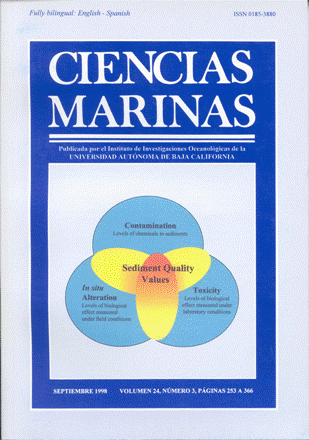Site-specific sediment quality values for the Gulf of Cádiz (Spain) and San Francisco bay (USA), using the sediment quality triad and multivariate analysis
Main Article Content
Abstract
Sediment quality values need to be developed to help protect public health and the environment. Data derived from sediment chemistry, sediment toxicity tests and macrobenthic infaunal community structure from two separate integrative studies (sediment quality triad) conducted in the Gulf of Cádiz and in San Francisco Bay were analyzed by multivariate statistical techniques (principal component analysis [PCA] and factor analysis) to identify the concentration ranges of the chemicals associated with adverse effects. Application of PCA-factor analysis to the data matrix for the Gulf of Cádiz showed that the three data types could be represented by five principal factors, whereas for San Francisco Bay, there were four principal factors. These factors, as well as chemical concentrations and biological effects, were used to establish site-specific sediment quality values for each area studied. Positive prevalence of these factors in the cases studied (seven stations in the Gulf of Cádiz and nine in San Francisco Bay) was used to establish the ranges of chemical concentrations associated with adverse effects. The values proposed for the Gulf of Cádiz, in terms of concentrations at or below which biological effects have been shown to be minimal, are (in mg kg–1 of dry sediment): chromium, 101.2; lead, 66.8; linear alkylbenzenesulphonate, 12.8; silver, 1.2; and mercury, 0.46. The values proposed for San Francisco Bay are (in mg kg–1 of dry sediment): zinc, 156; chromium, 110; nickel, 88; copper, 68; arsenic, 58; lead, 49; tin, 8.0; silver, 4.0; mercury, 0.37; PCBs, 0.057; and DDTs, 0.00224.
Downloads
Article Details
This is an open access article distributed under a Creative Commons Attribution 4.0 License, which allows you to share and adapt the work, as long as you give appropriate credit to the original author(s) and the source, provide a link to the Creative Commons license, and indicate if changes were made. Figures, tables and other elements in the article are included in the article’s CC BY 4.0 license, unless otherwise indicated. The journal title is protected by copyrights and not subject to this license. Full license deed can be viewed here.

